Reviews
Les glaneurs et la glaneuse
Agnès Varda
France, 2000
Credits
Review by Leo Goldsmith
Posted on 09 August 2010
Source Netflix VOD
Categories Viva Varda: The Films of Agnès Varda
Agnès Varda’s The Gleaners and I is a mixed bag, and for this very reason it is one of her most essential films. An elegant hodgepodge if ever there was one, Varda’s 2000 video-essay epitomizes the unassumingly eclectic body of work of an emphatically inclusive filmmaker. Throughout her career, and especially in her non-fiction films, Varda has demonstrated a rare openness in her artistic practice that a more control-freakish director might avoid, an ability to draw many outside styles, themes, and collaborators into otherwise very personal projects. The Gleaners and I might be the apotheosis of this tendency — indeed, it is about this form of generous heterogeneity as a way of making art and of living.
At the level of documentary, the film depicts the making of mixed bags of various kinds and for various reasons — out of habit or a simple desire for fun, but more commonly out of brute necessity. After all, the act of gleaning, which Varda instructively defines at the beginning of the film with the help of a trusty dictionary, is commonly associated with poverty and hunger: like the famous examples in Jean-François Millet’s 1857 realist painting, gleaners are usually depicted as impoverished people (most frequently women) in rural areas who collect scraps of wheat left over from a harvest. But Varda is after something more personal, more essayistic, as well. What at first seems a specific, localized practice — or else a remotely historical one — is also a metaphor for Varda’s own approach to cinema.
But Varda begins her study of gleaning in its most traditional sense: as “the old way,” one part of a thrifty and steadily outmoded agricultural way of life. “My mother’d say, ‘Pick everything up so nothing gets wasted,’” remarks one woman Varda encounters, invoking the scarcity of resources during wartime or periods of economic hardship. And while Varda remarks that gleaners in rural areas are somewhat rarer than they might have been in Millet’s day, she still manages to find a few, as in one marvelous sequence in which individuals and small groups of people (unemployed or displaced people, single moms, kids with their parents, charity volunteers) congregate around a large industrial farm to glean from huge piles of discarded potatoes. Some of the potatoes have been rejected because they are green (and therefore dangerous to eat), but others just don’t conform to a kind of market-uniformity—they’re too small or too big, or just shaped funny. Varda joins in by starting her own collection of heart-shaped spuds, making the practice look like quite a lot of fun, even like a sort of treasure-hunt.
Of course, Varda’s point is that gleaning is fun, though it also remains a survival strategy for many of the people she encounters and (in her own disarming way) befriends: a group of “gypsies” who’ve been relegated to a remote rural ghetto by their local government; a pair of displaced immigrants — one Chinese, the other African — who fish for food in supermarket trash bins and share it with friends; an alcoholic “hobo” who has lost his job and his family, and now lives on welfare in a caravan and drinks a case of beer a day with his friends. “Gleaning might be extinct, but stooping has not vanished from our sated society,” Varda notes, and she shows us the many types of people who subsist on scraps discarded by those who can afford to waste. As in her 1985 film Vagabond, Varda is ambivalent, but thoughtful in her representation of poverty: her approach is marked by a genuine curiosity and empathy, but also a conspicuous lack of judgment1 (and a dash of awesome French hip-hop).
The most polemical Varda gets is in her sly juxtaposition of haves and have-nots, as when she cuts from the hobo’s noble epigram — “We’re not afraid to get our hands dirty. You can wash hands” — to a haute couture kitchen in a fancy restaurant. Even here, in the grand French tradition of respectful culinary habits, nothing is wasted — today’s leftover vegetables are used for tomorrow’s stock — but Varda subtly underscores the difference between thrift born of necessity and a certain hoarding greediness. Gleaning is, after all, a kind of stealing - at very least, it entails a certain amount of trespassing - and the film also enumerates those who would guard against it: a winemaker in la région de Grand Cru who lets his excess grapes fall to rot on the ground; a few land-owners and care-takers who take measures to protect unharvested crops that might otherwise be shared with others; even a supermarket owner who prosecuted a bunch of kids for stealing trash from behind his store. Siding, naturally, with the gleaners, Varda singles out “stingy” people for her own form of barely veiled contempt, and even enlists a robed jurist to stand in the middle of a field of cabbage, post-harvest, to declare that it can be legally gleaned. For Varda, the point is less that gleaners often break the law than that they have to get their food through these means in the first place.
Still, as pervasive as gleaning remains as a means of survival, Varda recognizes that its modern variation is typically more metaphorical, even intellectual (as in “gleaning for information”). She talks with found-object artists like Louis Pons about gleaning as an aesthetic practice, and visits a flea market to exemplify gleaning as a sort of collector’s habit, but the primary example of gleaning in Varda’s film is her own artistic practice. Early in The Gleaners and I she declares, “There is another woman gleaning in this film—it’s me.” Here and in her title — Les glaneurs et la glaneuse in French, or The Gleaners and the Gleaneress — Varda identifies herself as an equal, but distinct sort of gleaner, and to illustrate this she films herself dropping a bale of gleaned wheat and picking up a video camera.
The medium of video is crucial here — Varda makes it clear that her approach to her subjects is not exactly that of a documentary filmmaker but that of a video essayist, one whose view of the world is always handheld, discursive, and first-person—a gleaning of bits of reality that have been overlooked or discarded by others. “These new, small cameras,” Varda remarks with pleasure, “they are digital—fantastique! Their effects are stroboscopic, narcissistic, and even hyper-realistic.” Turning this small, fantastique camera on herself - on the grey roots beneath her cropped, black-dyed hair, or on her liver-spotted hand, which allows her to “to enter into the horror” of old age - Varda demonstrates how this sort of gleaning can become not simply a way of living in the world, but of looking at it, too.
- This was an issue for Millet, as well, whose perceived glorification of the rural poor was regarded with a great deal of suspicion when his “Gleaners” was first exhibited. (Today, it hangs in the Musée d’Orsay.) But significantly, this was _not_ the kind of suspicion we might regard it with today. The cultured classes of the mid-19th century France - with a second revolution in the very recent past of 1848 and a nasty proletarian uprising in the Paris Commune on its way in 1871 - were scandalized by the notion of romanticizing so lowly and volatile a group as the working class, not by the idea of romanticization, per se. We might view the aspic tones of the painting as simplistic, but the elite of Millet’s day saw it as incendiary and downright ugly.↩
More Viva Varda: The Films of Agnès Varda
-
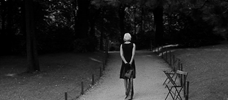
Cléo from 5 to 7
1962 -
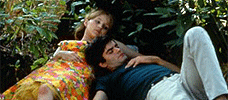
Le Bonheur
1964 -
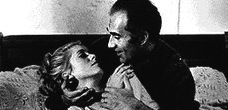
Les Créatures
1966 -
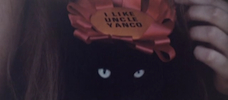
Uncle Yanco
1967 -

Black Panthers
1968 -

Lions Love
1969 -
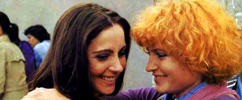
One Sings, the Other Doesn’t
1977 -
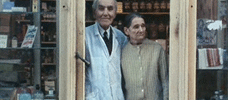
Daguerréotypes
1976 -
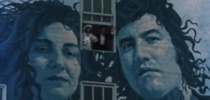
Mur murs
1981 -
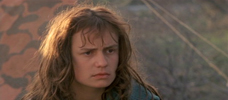
Vagabond
1985 -
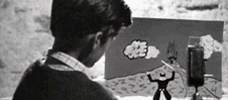
Jacquot de Nantes
1991 -

One Hundred and One Nights of Simon Cinéma
1995 -
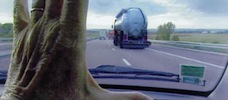
The Gleaners and I
2000 -
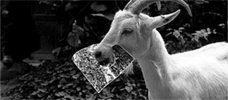
Cinévardaphoto
2004 -
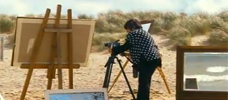
The Beaches of Agnès
2008
We don’t do comments anymore, but you may contact us here or find us on Twitter or Facebook.



